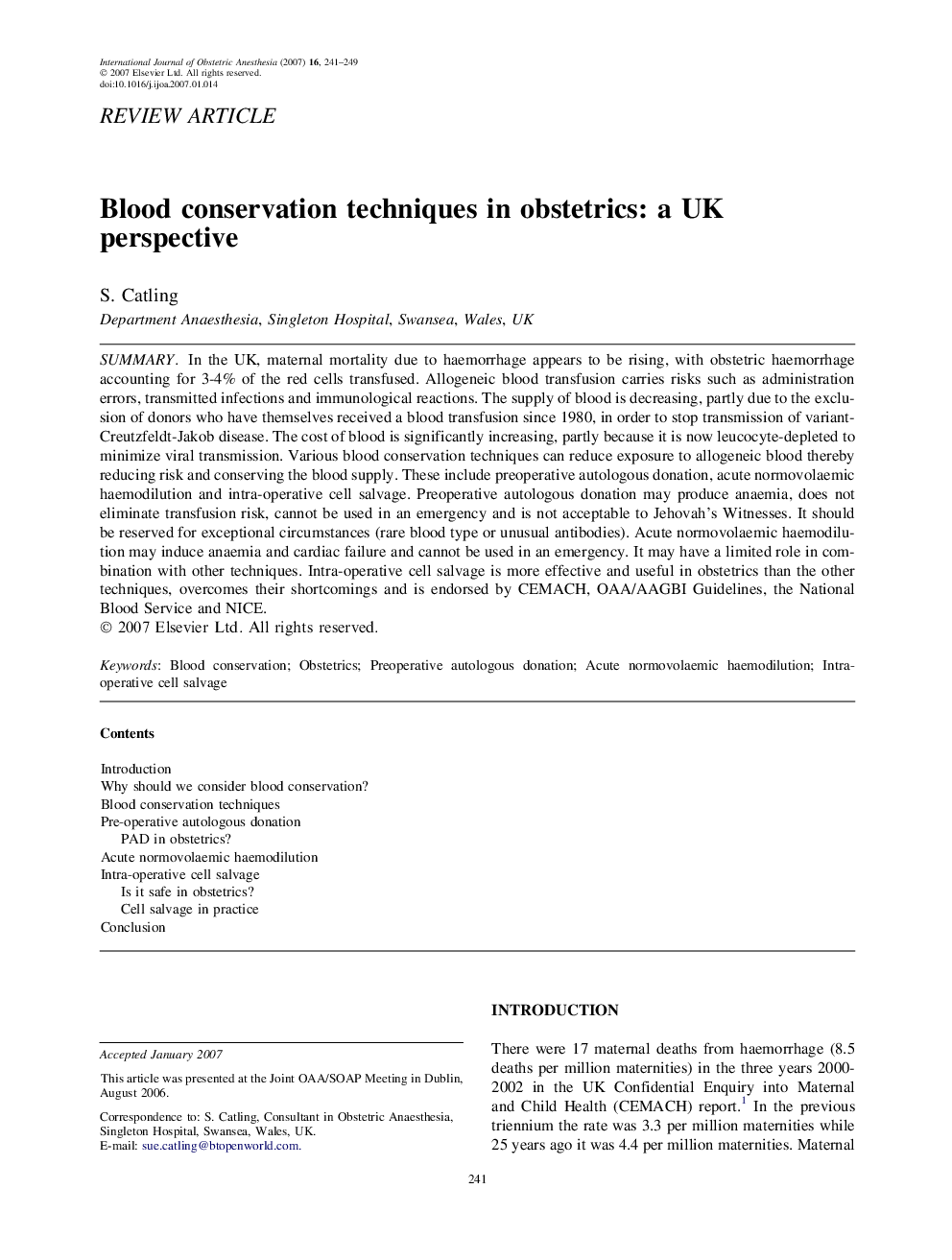| Article ID | Journal | Published Year | Pages | File Type |
|---|---|---|---|---|
| 2758590 | International Journal of Obstetric Anesthesia | 2007 | 9 Pages |
SummaryIn the UK, maternal mortality due to haemorrhage appears to be rising, with obstetric haemorrhage accounting for 3-4% of the red cells transfused. Allogeneic blood transfusion carries risks such as administration errors, transmitted infections and immunological reactions. The supply of blood is decreasing, partly due to the exclusion of donors who have themselves received a blood transfusion since 1980, in order to stop transmission of variant-Creutzfeldt-Jakob disease. The cost of blood is significantly increasing, partly because it is now leucocyte-depleted to minimize viral transmission. Various blood conservation techniques can reduce exposure to allogeneic blood thereby reducing risk and conserving the blood supply. These include preoperative autologous donation, acute normovolaemic haemodilution and intra-operative cell salvage. Preoperative autologous donation may produce anaemia, does not eliminate transfusion risk, cannot be used in an emergency and is not acceptable to Jehovah’s Witnesses. It should be reserved for exceptional circumstances (rare blood type or unusual antibodies). Acute normovolaemic haemodilution may induce anaemia and cardiac failure and cannot be used in an emergency. It may have a limited role in combination with other techniques. Intra-operative cell salvage is more effective and useful in obstetrics than the other techniques, overcomes their shortcomings and is endorsed by CEMACH, OAA/AAGBI Guidelines, the National Blood Service and NICE.
